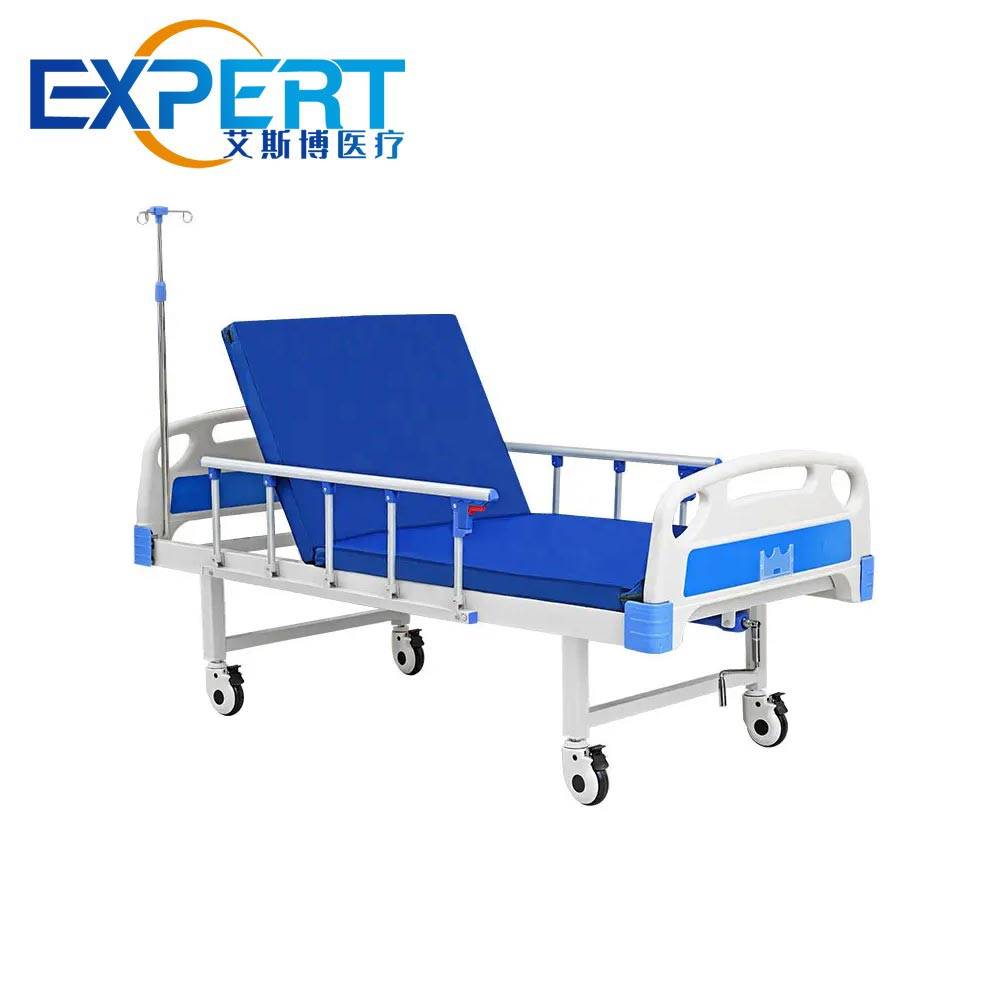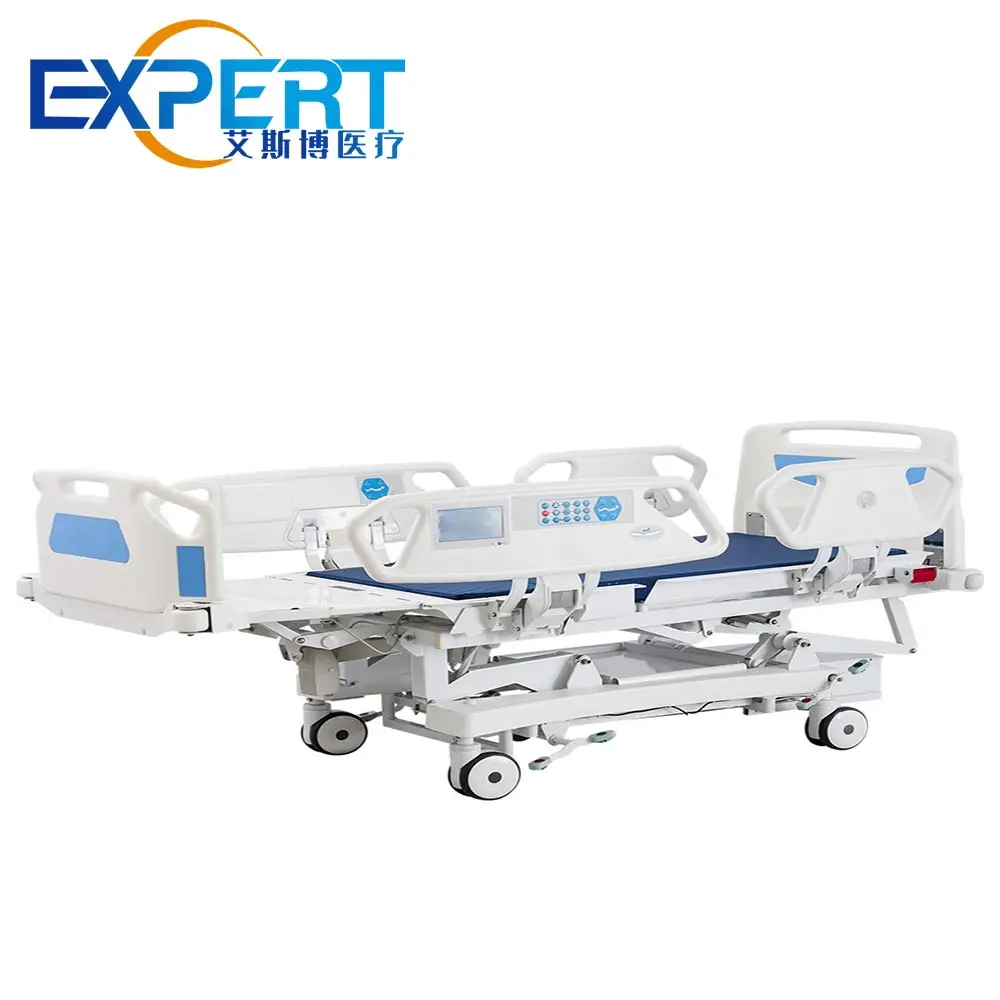Dirección
304 North Cardinal St.
Dorchester Center, MA 02124
Horas laborales
Lunes a viernes: 7:00 a. M. - 7:00 p. M.
Fin de semana: 10 a. M. - 5 p. M.
El entorno sanitario moderno requiere equipos que no solo cumplan con los más altos estándares de atención al paciente, sino que también mejoren la eficiencia de los profesionales médicos. Entre los equipos hospitalarios más esenciales se encuentra la cama de hospital con ruedas. Estas camas desempeñan un papel crucial en la recuperación, la seguridad y la comodidad general del paciente, lo que las convierte en un activo indispensable en cualquier centro médico. En esta guía completa, exploraremos los diversos aspectos de las camas de hospital con ruedas, incluidos sus beneficios, características, tipos y mantenimiento. Al comprender estos factores, los proveedores de atención médica pueden tomar decisiones informadas para mejorar la atención al paciente y la eficiencia operativa.

Una de las principales ventajas de las camas de hospital con ruedas es su mayor movilidad. Estas camas se pueden mover fácilmente de un lugar a otro, lo que facilita el traslado de los pacientes dentro del hospital. Esta movilidad es especialmente beneficiosa en situaciones de emergencia, donde el traslado rápido y seguro de los pacientes es crucial. Además, las camas de hospital con ruedas se pueden ajustar a varias posiciones, lo que facilita los procedimientos, los exámenes y la comodidad del paciente.
Las camas de hospital con ruedas están diseñadas para brindar la máxima comodidad a los pacientes. Cuentan con características ajustables que permiten modificar la altura de la cabecera, los pies y la altura total de la cama. Esta flexibilidad ayuda a adaptarse a diferentes necesidades médicas y preferencias de los pacientes. Además, la facilidad de movimiento permite trasladar a los pacientes a diferentes áreas del hospital, como salas de terapia o salas de recuperación, sin la incomodidad de ser levantados o transportados.
Para los profesionales sanitarios, las camas de hospital con ruedas ofrecen una comodidad y una seguridad considerables. La capacidad de mover las camas con suavidad reduce el riesgo de lesiones al trasladar a los pacientes. Además, estas camas suelen venir equipadas con mecanismos de bloqueo para garantizar la estabilidad cuando están estacionarias, lo que proporciona un entorno seguro tanto para los pacientes como para el personal.
Las camas de hospital con ruedas suelen tener múltiples posiciones ajustables. Estos ajustes incluyen:
La seguridad es una preocupación fundamental en cualquier entorno sanitario. Las camas de hospital con ruedas están equipadas con mecanismos de bloqueo que las fijan en su lugar cuando es necesario. Estos mecanismos de bloqueo evitan movimientos accidentales, lo que garantiza la seguridad del paciente durante el descanso o los procedimientos médicos.
La construcción de camas de hospital con ruedas implica el uso de materiales robustos como acero y plásticos reforzados. Estos materiales garantizan durabilidad y longevidad, lo que permite que las camas soporten un uso intensivo en entornos hospitalarios concurridos. Además, las ruedas de alta calidad proporcionan un movimiento suave y confiable en diversas superficies de piso.
Las barandillas laterales integradas son una característica estándar en las camas de hospital con ruedas. Estas barandillas brindan seguridad adicional al evitar que los pacientes se caigan accidentalmente de la cama. Son ajustables y se pueden subir o bajar según sea necesario, lo que ofrece protección y un fácil acceso.
Algunas camas de hospital con ruedas cuentan con funciones avanzadas, como controles electrónicos, básculas integradas y colchones especiales. Estas funciones mejoran la atención al paciente al proporcionar ajustes precisos y funciones adicionales adaptadas a necesidades médicas específicas.









Las camas de hospital manuales con ruedas requieren un esfuerzo físico para ajustar las posiciones. Son rentables y adecuadas para instalaciones con limitaciones presupuestarias. Sin embargo, es posible que no ofrezcan el mismo nivel de comodidad que las camas eléctricas.
Las camas de hospital semieléctricas combinan ajustes manuales y eléctricos. Por lo general, permiten el ajuste electrónico de la posición de la cabeza y los pies, mientras que el ajuste de la altura se realiza manualmente. Este tipo ofrece un equilibrio entre costo y funcionalidad.
Las camas de hospital totalmente eléctricas con ruedas ofrecen el máximo nivel de comodidad y funcionalidad. Todos los ajustes, incluida la altura y la posición de la cabeza y los pies, se controlan electrónicamente. Estas camas son ideales para instalaciones que priorizan la facilidad de uso y la comodidad del paciente.
Las camas de hospital bariátricas están diseñadas para alojar a pacientes más pesados. Cuentan con marcos reforzados, dimensiones más amplias y mayor capacidad de carga. Estas camas garantizan la seguridad y la comodidad de los pacientes bariátricos, al tiempo que mantienen la movilidad y la funcionalidad.
Las camas de hospital pediátricas con ruedas están diseñadas para niños. Vienen en tamaños más pequeños y suelen incluir características adaptadas a los niños, como diseños coloridos y opciones de entretenimiento integradas. Estas camas brindan un entorno seguro y cómodo para los pacientes jóvenes.
Para ayudarle a comparar los distintos tipos de camas de hospital con ruedas, aquí hay una tabla que resume las características y especificaciones clave:
| Característica | Cama manual | Cama semieléctrica | Cama completamente eléctrica | Cama bariátrica | Cama pediátrica |
|---|---|---|---|---|---|
| Mecanismo de ajuste | Manual | Manual/Eléctrico | Completamente eléctrico | Completamente eléctrico | Completamente eléctrico |
| Facilidad de uso | Moderado | Bien | Excelente | Excelente | Excelente |
| Costo | Bajo | Medio | Alto | Alto | Medio |
| Capacidad de peso | Hasta 300 libras | Hasta 400 libras | Hasta 450 libras | Hasta 1000 libras | Hasta 300 libras |
| Grupo de pacientes objetivo | Adultos | Adultos | Adultos | Pacientes bariátricos | Niños |
| Funciones avanzadas | Básico | Básico | Avanzado | Avanzado | Avanzado |

El mantenimiento adecuado de las camas de hospital con ruedas es esencial para garantizar su longevidad y funcionalidad. El mantenimiento regular implica:
Camas de hospital con ruedas Las camas con ruedas son un componente vital en la industria de la atención médica, ya que ofrecen mayor movilidad, comodidad para el paciente y seguridad para los proveedores de atención médica. Al comprender los distintos tipos, características y requisitos de mantenimiento, los centros de atención médica pueden elegir la cama de hospital con ruedas adecuada para satisfacer sus necesidades específicas. Invertir en camas de alta calidad y bien mantenidas garantiza una mejor atención al paciente y una mayor eficiencia operativa, lo que en última instancia contribuye al éxito general del centro de atención médica.
R: Las camas de hospital con ruedas ofrecen mayor movilidad para facilitar el traslado de los pacientes, mayor comodidad para el paciente con posiciones ajustables y mayor seguridad tanto para los pacientes como para los proveedores de atención médica.
R: Tenga en cuenta factores como las necesidades específicas de sus pacientes, las limitaciones presupuestarias y el nivel de comodidad y funcionalidad requerido. Las camas manuales son rentables, las camas semieléctricas ofrecen un equilibrio entre ajustes manuales y eléctricos, y las camas totalmente eléctricas brindan el mayor nivel de comodidad.
R: La limpieza y desinfección periódicas, la inspección rutinaria de las partes móviles, la lubricación de las partes mecánicas, la revisión de los componentes eléctricos y el reemplazo oportuno de las piezas desgastadas son esenciales para el mantenimiento de las camas de hospital con ruedas.
R: Sí, existen camas hospitalarias especializadas con ruedas para distintos grupos de pacientes, como camas bariátricas para pacientes más pesados y camas pediátricas adaptadas para niños. Estas camas cuentan con características específicas para satisfacer las necesidades de cada grupo de pacientes.
R: Las características avanzadas de las camas de hospital con ruedas pueden incluir controles electrónicos para ajustes fáciles, básculas incorporadas, colchones especializados para aliviar la presión y diseños aptos para niños con opciones de entretenimiento para pacientes pediátricos.
